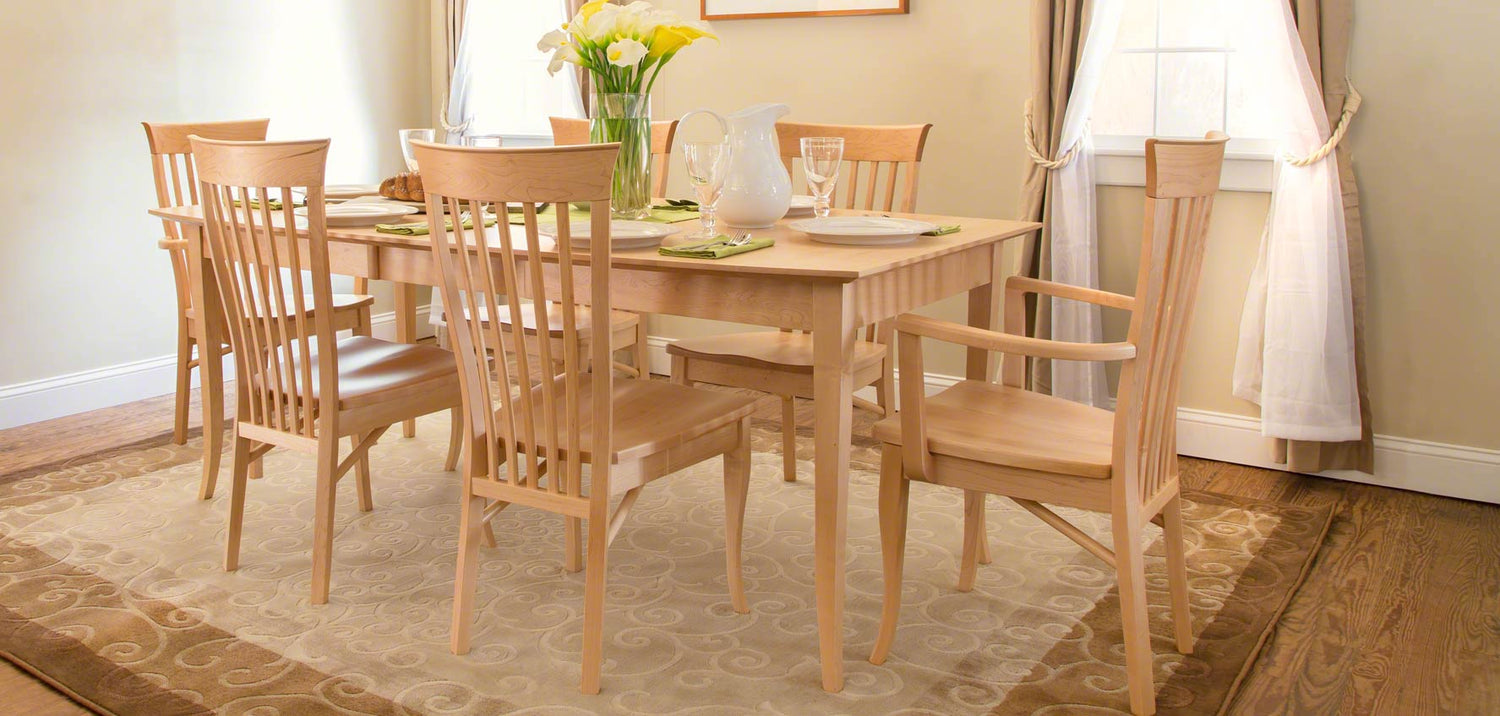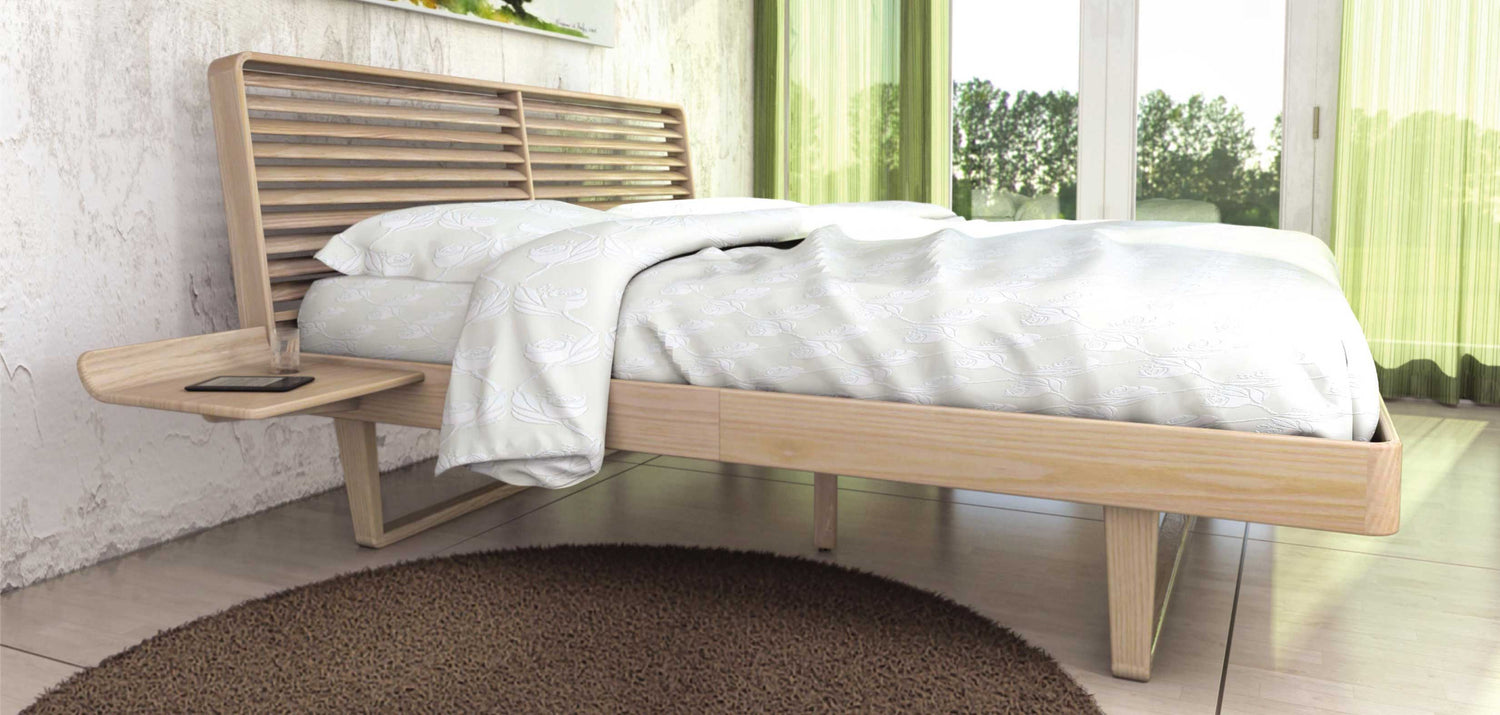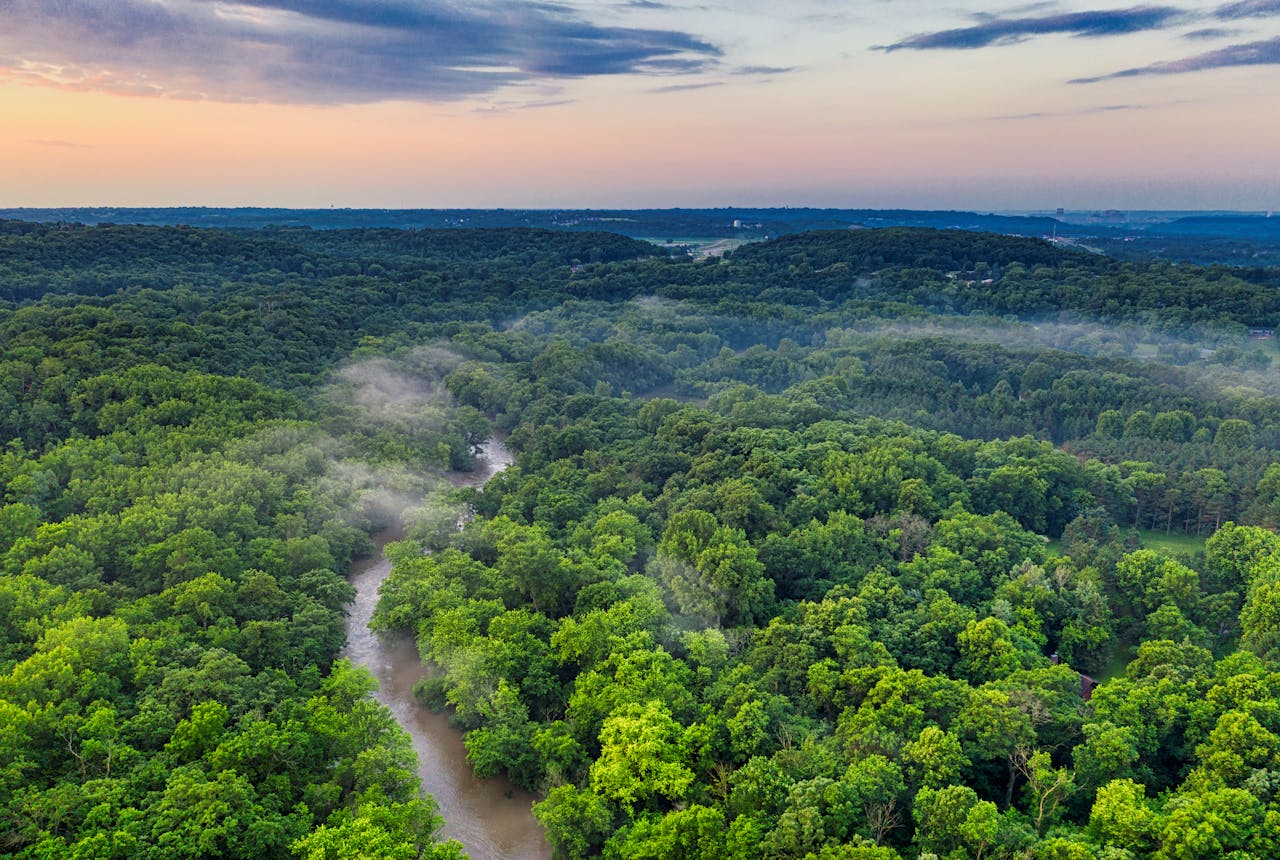
Wood Types
Sustainably Sourced North-American Hardwoods
All of our solid wood furniture is built with sustainably harvested, North-American hardwoods. Order Wood Samples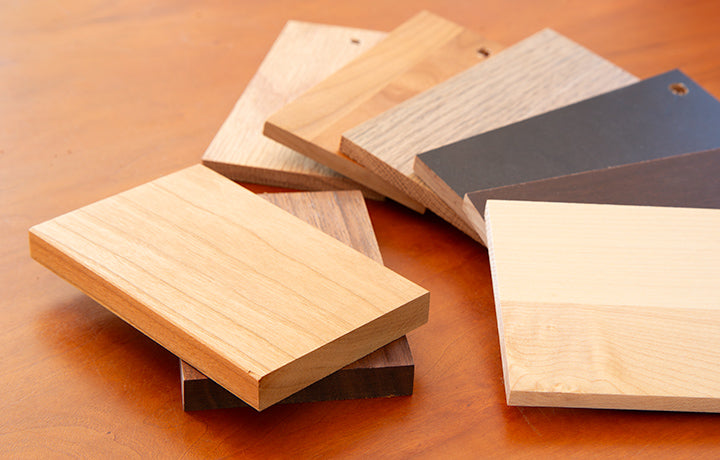
Wood Origin
Vermont Woods Studios fine furniture is handcrafted in Vermont using real solid wood. Every piece is carefully selected and inspected for quality, strength, straightness, grain, and color. The wood comes from sustainably managed North American forests, ensuring they will thrive for generations. We also offer FSC-certified lumber upon request, though it comes at an extra cost. In some cases, our artisans use wood from their own land, adding a unique, personal touch to your furniture.
Wood Species
Our furniture makers typically work with four species of wood: black cherry, sugar maple, red oak and black walnut. We like these species because they are well suited to fine furniture making by virtue of their color, strength, hardness, grain patterns and workability. They are also readily obtainable in our local and regional area, making them a sustainable choice. Often our furniture makers will offer two-tone combinations of these woods creating a custom, artisan look and feel to their work. If you are looking for a different wood species, give us a call. We will be happy to discuss options and considerations involving the use of other wood species.
-
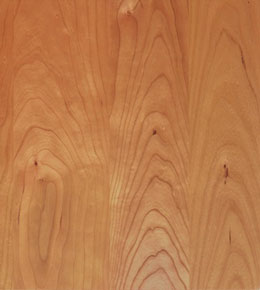
Cherry
-
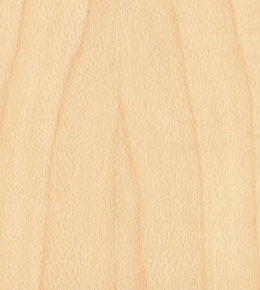
Maple
-
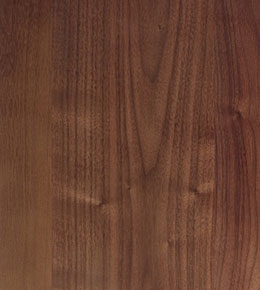
Walnut
-
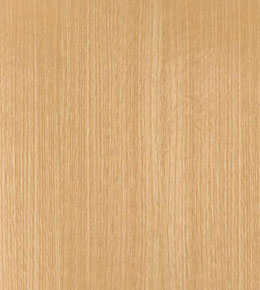
Oak
Natural Wood Characteristics
Each piece of Vermont Woods Studios furniture is made from natural solid hardwood, with unique grain variations and markings that distinguish it as a one-of-a-kind work of art. Lighter grain is sapwood, while darker grain is heartwood. These natural features, including mineral deposits, do not affect durability or integrity and are signs of genuine quality. Unlike mass-produced furniture with artificial finishes, we embrace the authentic beauty of real wood.
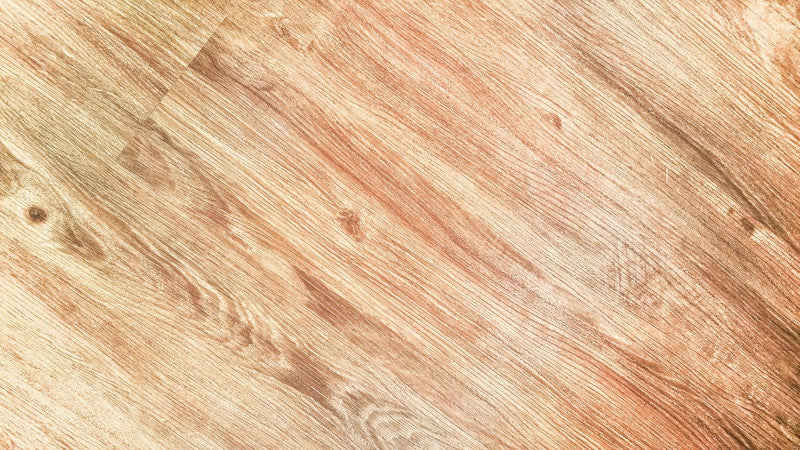
Figured Character Woods
Many of our artisans work with extraordinary figured wood boards that have curly, wavy or striped grain as well. If you are looking for this type of character wood, let us know. Tiger maple, curly cherry, birdseye maple, spalted maple and burl woods are just a few of the figured woods we may be able to offer.
Black Cherry
Natural cherry wood is perhaps the most prized furniture hardwood in America. Easily our most popular seller, cherry is a smooth-grained, reddish-brown hardwood that comes from the American Black Cherry fruit tree. Cherry is renowned among woodworkers and furniture aficionados for its color and aging process. It starts out a light pink and darkens over time to a rich reddish hue with a lustrous patina.
Black Walnut
Black walnut wood is dark, hard, dense and tight-grained. It's prized by woodworkers for its strength, grain and color. It polishes to a very smooth finish, and the color ranges from creamy white in the sapwood to a dark chocolate in the heartwood. Over the years, natural walnut wood develops a lustrous patina. As the only dark-brown domestic wood species, it has a large following of devoted woodworkers and fine furniture aficionados. Walnut is also found in upscale cabinets, natural wood flooring, kitchen accessories, gunstocks, and more. Although there are many varieties of walnut trees, just a handful are native to North America. Of them, the Eastern Black Walnut, also called the American Black Walnut or American Walnut, is the one typically used for woodworking.
Red & White Oak
Oak is one of the most popular woods used in furniture and flooring in the US. It’s found in traditional, craftsman, and mission style furniture and is the wood of choice for the Amish, as well as famed furniture designers Gustav Stickley and Frank Lloyd Wright. Oak is highly durable and looks great stained or with a clear, natural finish. It comes in a number of hues, but its grain pattern is quite unique, which makes it one of the easier species to recognize. Oak wood has a long history in homes, from pre-colonial times to today. Its versatility makes it suitable for both traditional and modern designs. With over 60 varieties of oak in the U.S., red and white oak are the most common for furniture. Both are durable, making them ideal for busy homes.
Birch
Birch is a native hardwood that comes from the genus Betula. There are over a dozen species of birch trees native to North America, but the most common are white birch, yellow birch, and black birch. Yellow birch and white birch are the two most commonly found in woodworking.
When birch is mentioned as an option for fine furniture in the United States, it’s typically yellow birch wood, sometimes called golden birch, being referenced. Yellow birch wood is light in color and smooth-grained, not unlike maple wood, although birch tends to yellow more visibly over time.
Chestnuts
Chestnut wood doesn’t refer to wood from a single tree, but rather from a family of trees. The most well-known is the American chestnut, which can appear in various shades from a pale white through medium brown, which develops a reddish hue with age.
Once an absolute staple in American lives, the American chestnut was prized for its delicious nuts and impressive wood. Early pioneers appreciated that it was incredibly durable and one of the most rot-resistant options. Many pieces crafted more than 100 years ago are still in existence today. Plus, it grew in great abundance, earning it the title of “redwood of the east.”
Poplar
Poplar wood is typically a white or creamy yellow hue, though it can be brownish or appear with mineral streaks of various colors in it, referred to as “rainbow poplar.” Although it is used more for utilitarian purposes (it’s more likely to be used for drawers than cabinet fronts or for match sticks than tables), it does occasionally make an appearance in some artisan furniture.
Eastern Pine
Eastern white pine is known for its knotty, rugged look and creamy white color, sometimes with a yellowish hue. While not ideal for high-end furniture or cabinetry due to its softness, it's a great choice for a rustic, farmhouse feel. Abundant in eastern North America, pine is affordable and often used in reclaimed form for a unique, rustic aesthetic.





